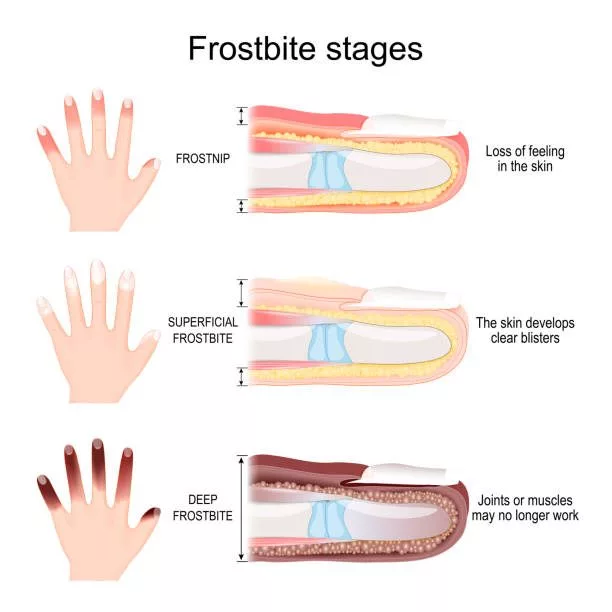
Frostbite stages of fingers. From Frostnip with Loss of feeling in the skin to Deep Frostbite of Joints and muscles. Vector illustration
Below freezing temperatures are a part of winter in Iowa, and one of the dangers to be watchful for is frostbite.
Guthrie County Health Services Director Jotham Arber says frostbite can happen when people are not properly prepared for the conditions and spend too much time in the below freezing temperatures. He tells Raccoon Valley Radio that there are actually stages of frostbite, ranging from frost nip, to superficial frostbite, to full blown frostbite, that typically impacts hands, face, nose, ears and toes.
“What will end up happening is that lack of blood flow and the lack of warmth to those areas will start to form large blisters and your hand will start to turn black, which the problem that we have at that point is once it starts to rewarm, there’s a potential that you will not be able to save those areas of your fingers and your toes and your nose.”
Arber mentions that frost nip is just a redness to the exposed skin, with there being a slightly painful tingle. He details that the next level is superficial frostbite, where the tingling sensation becomes more painful, resulting in the formation of blisters. He adds that both of these steps in frostbite are something that individuals can come back from without much damage, but when suffering full blown frostbite amputation may be necessary to remove dead tissue.

